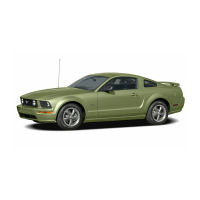
Do you have a question about the Ford 2006 Mustang and is the answer not in the manual?
| Brand | Ford |
|---|---|
| Model | 2006 Mustang |
| Category | Automobile |
| Language | English |
Details warning lights, gauges, and indicators on the vehicle's dashboard for driver information.
Covers operation of the audio system, including AM/FM stereo, CD player, and MP3 functions.
Explains manual heating and air conditioning system operation and features like rear defroster.
Describes operation of headlamps, fog lamps, turn signals, and bulb replacement procedures.
Details operation of multi-function levers, steering wheel, power windows, mirrors, and speed control.
Covers keyless entry, power door locks, anti-theft systems, and trunk operation for vehicle security.
Explains the function of various warning lights and chimes for vehicle status and alerts.
Details the meaning and implications of the "Service Engine Soon" indicator light.
Explains the brake system warning light, its causes, and associated risks.
Describes the ABS warning light and its implications for vehicle braking performance.
Explains the engine coolant temperature warning light and actions to take for overheating.
Details the Traction Control active light, malfunction indicators, and system operation.
Provides an overview of the instrument cluster gauges, including speedometers and odometers.
Explains the function of the speedometer in indicating current vehicle speed.
Explains the battery voltage gauge and what to do if the pointer is outside the normal range.
Covers basic controls and functions of the AM/FM stereo and single CD player.
Explains how to adjust audio balance between speakers and front/rear fade.
Guides on how to set the vehicle's clock using the menu system.
Explains how the MP3 system recognizes individual tracks and folder structures.
Explains the operation of the manual HVAC system, including temperature and mode selections.
Details fan speed control and provides operating tips for defogging and cooling.
Describes the rear window defroster operation, LED indicator, and cleaning precautions.
Explains the headlamp control functions for turning lights on/off and selecting parking/headlamps.
Details the "flash to pass" feature for headlamps and its activation.
Provides instructions for adjusting the vertical aim of the vehicle's headlamps.
Covers general information on bulb replacement, including headlamp condensation and interior bulbs.
Explains the operation of the multi-function lever for windshield wipers and washers.
Describes how to adjust the tilt of the steering wheel for optimal driver positioning.
Explains how to operate the power windows and important safety precautions.
Details the one-touch express down and express up functions for front windows.
Explains the function and setting of the vehicle's speed control system.
Covers vehicle key operation, spare key importance, and authorized dealer key replacement.
Explains the operation of power door lock controls on the door panels.
Details the automatic door locking feature for vehicles with automatic transmissions.
Covers the features and operation of the remote entry system for unlocking, locking, and alarm activation.
Describes the SecuriLock passive anti-theft system, its function, and the anti-theft indicator.
Provides instructions for programming new coded keys to the vehicle.
Covers general seating notes, seatback reclining warnings, and adjustable head restraints.
Details the front passenger sensing system's role in airbag deployment based on occupant presence.
Provides crucial safety precautions for all vehicle occupants regarding seat belts and seating positions.
Covers general safety restraint requirements and precautions for children.
Explains when children should use booster seats and how to ensure a proper fit.
Explains how to attach child safety seats using tether straps to anchor points.
Explains tire quality grades, including Treadwear, Traction, and Temperature ratings.
Details the importance of proper tire inflation and how to check and adjust tire pressure.
Explains how to identify tire wear and damage, and the importance of timely replacement.
Outlines requirements and recommendations for replacing tires and wheels.
Guides on proper vehicle loading and weight ratings, with or without a trailer.
Explains payload as combined weight of cargo and passengers and how to determine capacity.
Explains Gross Vehicle Weight Rating (GVWR) and its relation to vehicle load limits.
Covers trailer towing capacity, weight limits, and precautions for towing.
Covers ignition positions and preparation steps for starting the vehicle.
Offers critical safety advice before starting the vehicle, including seat belt use.
Explains the procedure for starting the engine and troubleshooting if it fails to start.
Discusses brake noise, potential issues, and refers to the brake system warning light.
Details the Traction Control system, its operation, and indicator lights.
Provides tips to prevent damage to the power steering system and common issues.
Explains automatic transmission operation, including the brake-shift interlock feature.
Covers manual transmission operation, clutch usage, and recommended shift speeds.
Explains the complimentary roadside assistance program and its available services.
Explains the fuel pump shut-off switch and how to reset it after a jolt.
Details the function of fuses and relays and precautions for replacement.
Provides a chart of standard fuse amperage ratings and their corresponding colors.
Details the high-current fuses located in the power distribution box.
Provides step-by-step instructions on how to change a flat tire on the vehicle.
Explains the usage and limitations of dissimilar spare tires/wheels.
Details safety precautions and steps for changing a flat tire.
Provides instructions and safety precautions for jump-starting a vehicle with a dead battery.
Covers recommended towing procedures and precautions to prevent vehicle damage.
Guides on how to obtain warranty repairs and service from authorized dealers.
Provides information for owners needing assistance while traveling abroad.
Instructs how to report potential safety defects to NHTSA and Ford Motor Company.
Details the proper procedures for washing the vehicle's exterior using appropriate soaps and methods.
Explains how to clean aluminum wheels and wheel covers to maintain their finish.
Provides guidance on cleaning the engine compartment, including precautions and product recommendations.
Details how to clean windshields, windows, and wiper blades for optimal visibility.
Covers cleaning procedures for fabric, carpets, cloth seats, and safety belts.
Outlines service recommendations, including DIY tasks and professional service.
Provides instructions on how to safely open the vehicle's hood.
Identifies key components located in the engine compartment for the 4.0L SOHC V6 engine.
Details how to add windshield washer fluid, including fluid type and precautions.
Provides a step-by-step guide for checking the vehicle's engine oil level.
Guides on adding engine oil, including recommended types and precautions.
Covers battery maintenance, electrolyte level checks, and cleaning precautions.
Explains how to check engine coolant concentration and level.
Explains the fail-safe cooling system for V8 engines and its operation during overheating.
Offers critical safety precautions for handling automotive fuels like gasoline.
Provides essential safety guidelines for refueling the vehicle, including turning off the engine.
Provides formulas and methods for calculating fuel economy accurately.
Details the emission control system components and maintenance required to ensure proper function.
Explains the OBD-II system, its function in monitoring emissions, and common indicator light causes.
Covers checking and adding power steering fluid, including proper fluid types and procedures.
Details checking automatic transmission fluid and the importance of using approved fluid types.
Lists Motorcraft part numbers for common vehicle components like filters and spark plugs.
Provides a table of fluid refill capacities for various vehicle systems.
Lists lubricant specifications, including part names, numbers, and Ford specifications.
Lists the base and GT vehicle dimensions in inches and millimeters.
Details the location and information contained within the Vehicle Identification Number (VIN).
Introduces genuine Ford accessories, their warranty, and availability.
Lists available exterior style accessories such as bug shields and spoilers.
Covers lifestyle accessories like bike racks and cargo management systems.
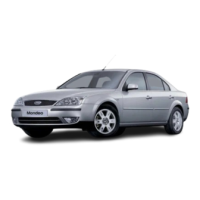
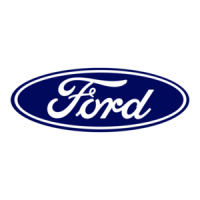

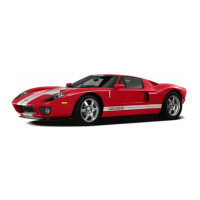
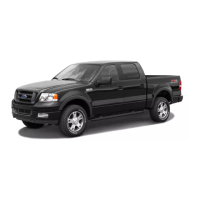
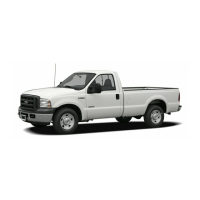
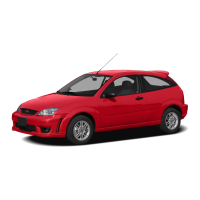
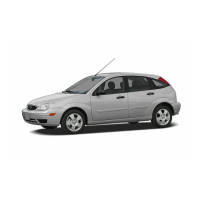
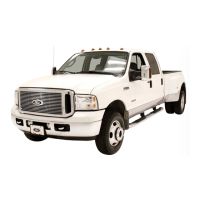
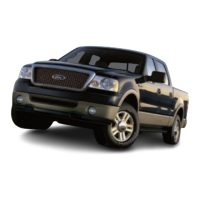


